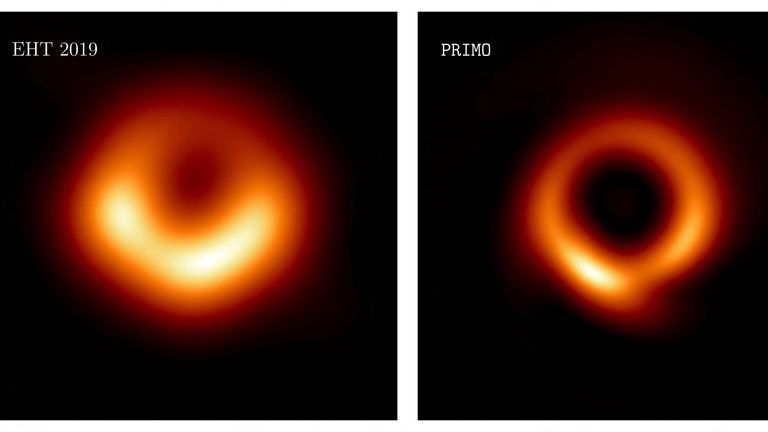Scientists have released a new, sharper image of a supermassive black hole first discovered in 2019.
The new image retains the distinctive shape compared to the first image — one astrophysicist called the original a “fuzzy orange donut” — but is sharper.
The data for the first image was collected by the Global Event Horizon Telescope project four years ago.
The sharper updated picture was created by mining the same original data, but increasing its resolution through image reconstruction algorithms to fill in the gaps in the original observations.
A black hole is a celestial body with such a strong gravitational pull that no matter or light can escape.
The halo in the image is material being sucked in by the ravenous black hole.
The supermassive black hole is located in a galaxy called Messier 87 (M87), about 54 million light-years from Earth. A light-year is the distance light travels in a year, or 5.9 trillion miles (9.5 trillion kilometers).
At 6.5 billion times the mass of the sun, M87 is larger and brighter than our own Milky Way galaxy.
Dr. Lia Medeiros of the Institute for Advanced Study in Princeton, NJ, is lead author of a study published in The Astrophysical Journal Letters.
Coming up with a nickname for the updated image was tricky, she said.
“I keep referring to this image as a ‘skinny donut,’ which sounds incredibly off-putting,” she said.
“We also discussed the ‘diet donut,’ which was equally unappetizing,” the astrophysicist said.
read more:
First image of a massive black hole
NASA releases black hole recordings
The study’s authors are part of the Event Horizon Telescope (EHT) project, launched in 2012 to observe black holes directly.
The event horizon is the point at which anything — stars, planets, gas, dust, and all forms of electromagnetic radiation — can be swallowed by a black hole.
Dr Medeiros said she and her colleagues planned to use the same technique to improve the only image ever taken of a black hole – an image released last year showing the black hole inhabiting the center of the Milky Way called Sagittarius A* .
“The EHT is a very sparse array of telescopes. That’s something we can’t do because we need to put the telescopes on top of mountains, which are few and far between. Most of the planet is covered by oceans,” said Georgia Tech. said Dr Dimitrios Psaltis, an astrophysicist at the Academy and study co-author.
“As a result, our telescope arrays have many ‘holes’ and we need to rely on algorithms to fill in the missing data,” Dr Psaltis added. “The image we report in the new paper is the most accurate image of a black hole we can obtain with telescopes around the world.”
